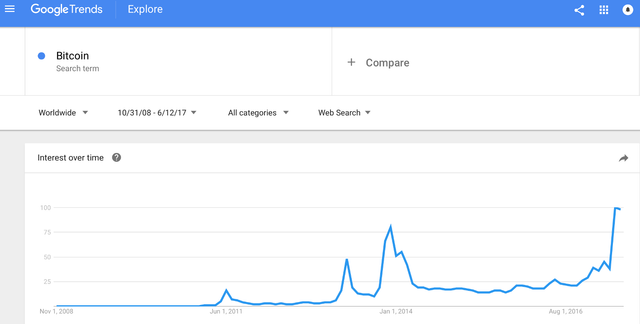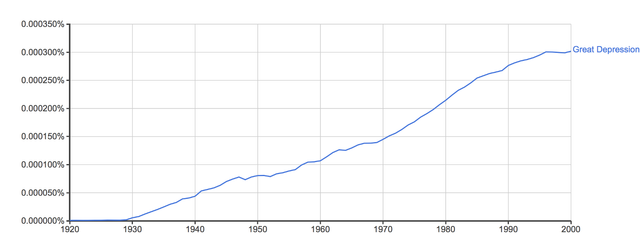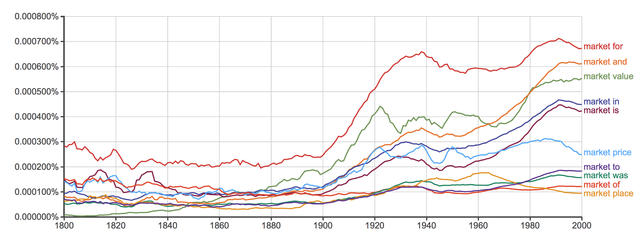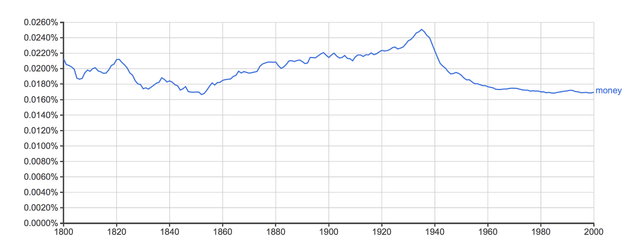How Bitcoin became a contagion and why it will die out
Storytelling is our social DNA
Humans are geared for narratives and storytelling. Bitcoin is a grand experiment of storytelling in our digital age. Once the domain of tech nerds and anti-banking crowds, Bitcoin has finally become a dinner topic at our home; the conversation was actually started by our high school student who learned about it in her world history class.
That same day, on our morning commute, we listened to the National Public Radio report on how ransomware hackers had demanded Bitcoin as payments. This coincided with a flurry of headlines on Bitcoin’s rapid price run-up passing the $2,000 mark, above the price of gold. The jaw dropping fact is — seven years ago, the value of a single Bitcoin was worth a quarter-of-a-cent. Savvy Bitcoin holders are now millionaires several times over, including a young Indian boy, groups of rural workers in China, and U.S. venture capitalists with deep pockets. How did a digital currency that originated from an obscure whitepaper become a global phenomenon and a cause for concern of a potential bubble.
It all started with a narrative shaped by Satoshi Nakamoto, Bitcoin’s anonymous creator, who offered anyone in the world a secured, borderless, and cheap way to send or receive money without going through the traditional financial system. Then Bitcoin was born, but like any market, without demand to meet the supply, the digital currency would have no value. This effort requires selling the idea of Bitcoin’s promise through word of mouth — and in the digital age with social media — ideas can be viral like a meme. The rest is history.
Infectious disease to social contagion
But how will the Bitcoin story end? Is this the peaked interest or will the fascination with Bitcoin die off? To get an idea, we turn to a model originally used to track how a communicable disease spreads over time — and apply it to social contagions. Robert Shiller, the Nobel Laureate, explains in his remarks on narrative economics that every disease has its own contagion rate, some spread fast faster than others. Fast epidemics may also last a few days or weeks while others extend to months or years.
 Kermack-McKendrick infectious disease model, adapted to social contagion in the digital age. N = 1000 population, initial infected = 1, contact rate = .5, mean recovery rate = 5./100. Over time almost the entire population would catch on the Bitcoin narrative.
Kermack-McKendrick infectious disease model, adapted to social contagion in the digital age. N = 1000 population, initial infected = 1, contact rate = .5, mean recovery rate = 5./100. Over time almost the entire population would catch on the Bitcoin narrative.
Let’s say our population consists of three groups:
- those who are susceptible but not yet infected with the disease;
- the number of infectious individuals;
- those individuals who have recovered from the disease and now have immunity to it.
We can use this stylized framework to get a view into how the global population will catch on the Bitcoin narrative given its disruptive cause to serve as digital cash for the Internet. Just like with infectious disease, here Bitcoin started with a single infected individual on day 0, Satoshi Nakamoto — Bitcoin’s inventor — embedded the genesis block on the blockchain.
How the narrative spreads depends on how effective a person who have bought into the Bitcoin narrative in persuading another person the value proposition of Bitcoin. With this contagion rate, the narrative could eventually reach family dinner tables and taxi cab drivers — but that’s not guaranteed since certain individuals may be hard skeptics.
Following infectious disease trends, we can expect the Bitcoin narrative to have a hump shape, marked by a rapid rise and fall in interest in the grand social experiment, though it’s uncertain the time horizon this will play out.
Google Trends show — based on global search interests — BTC is seeing unprecedented interests and haven’t run into the hump curve yet. That means the narrative contagion can last months, years, or even decades. Like during the Internet revolution of the 1990s, we’re still in the early stages of digital currency and its underlying technology, blockchain so expect lots of roller coasters.
To sharpen our view of the power of Bitcoin’s social contagion, we can look to other examples. There are generational events that shape our thinking to this day — the Great Depression is one. Mentions of this phrase in books, as shown by Google’s n-grams — Great Depression has gradually rose over many years, so people’s interest and storytelling around the historical event are still strong.
Interest in “Great Depression” narrative
Source: Google Ngram, tracking phrase 'Great Depression' popularity in books
There are other narratives that have peaked but remain in the collective consciousness across a long stretch of time. Adam Smith and Karl Marx are both very influential yet offer different visions for the role of markets and capitalism in society. Interests in Adam Smith peaked in in 1880s then experienced a slow decay for decades, taken over by Karl Marx in the period leading up to 1970s-1980s. That modern period was marred by high unemployment and high inflation — or stagflation — coupled with the rise of communist revolution in major parts of the world and a global concern for inequality — which stimulated interests in Karl Marx.
Source: Google n-gram
Source: Google ngram, tracking word 'market' popularity in books
Human interests in markets have seen several highs based on word mentions in books — peaking at the dawn of the new millennium.
Interest in money
Source: Google Ngram, tracking word 'money' popularity in books
Money has been a public interest for centuries based on word finds in books. It saw a peak and crash in the wake of the Great Depression. Preceding the Great Depression was the roaring 20s, filled with the fervor of stock market speculation and new trends in entertainment and social values. With the stock market crash, followed by double digit unemployment; pervasive poverty in the form of people waiting in breadlines and soup kitchens; and a growing distrust in the financial system, dampened interest in money. Even still, money remains a popular topic throughout modern periods — and hasn’t died.
What then of the future
Back to the big question: is Bitcoin just an outgrowth of human interest in money — a social innovation — to facilitate exchange — and will follow the hump curve shape predicted by the contagion curve — or will it ride out for decades and become part of our collective memory. Note humans have had numerous technological innovations related to money: gold, fiat money, ATMs, Apple Pay, and most recently Bitcoin. Inevitably, global interests in Bitcoin will peak and fizzle — the unknown is how fast it will die out. Meanwhile, this idea has generated considerable innovations aimed to tackle an array of problems facing businesses, governments, health care systems, and global organizations like the United Nations. Perhaps that’s enough to sustain human interests.
References:
- Kermack, W. O. and McKendrick, A. G. “A Contribution to the Mathematical Theory of Epidemics.” Proc. Roy. Soc. Lond. A 115, 700–721, 1927.
- Shiller, Robert. Narrative Economics. Cowles Foundation Discussion Paper №2069. 58 Pages Posted: 11 Jan 2017







Interesting piece of work but the conclusion that Bitcoin will fizzle seems a bit rash. Has it been considered that Bitcoin is software that can be updated and changed? And comparing Bitcoin to the rise and dissappearance of a disease is a whole new take on this ;)
If you read the basis of the conclusion, it's agnostic on when (the timing) Bitcon will "fizzle". Depending on how successful the narrative spreads, it could months, years, or decades before human interest could taper off. It's a stylized model that has been used to predict viral trends--some trends go viral a few days, others could go years.